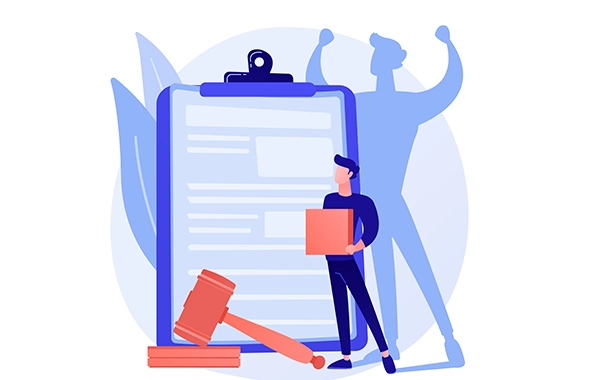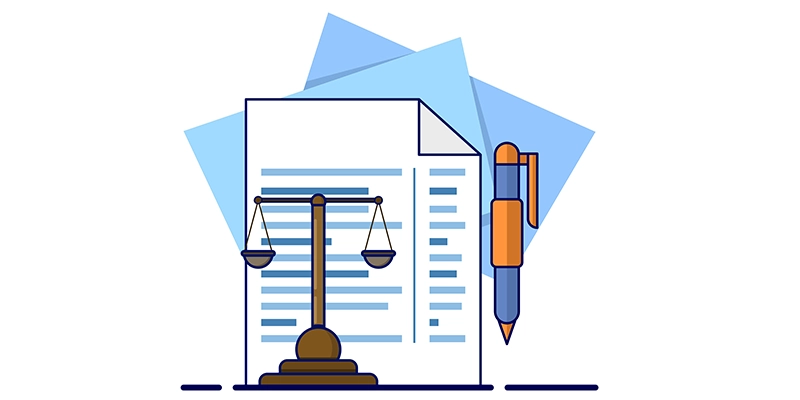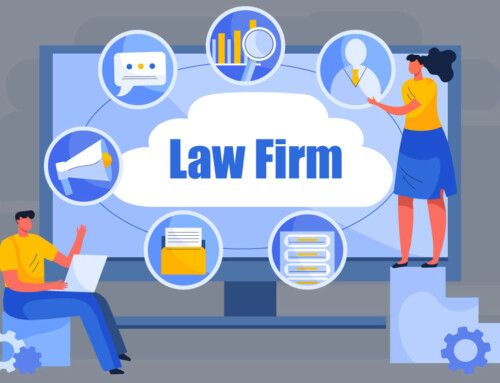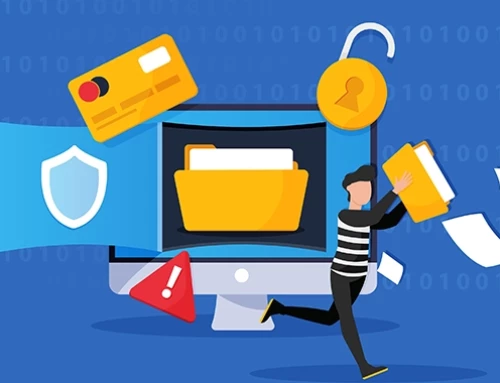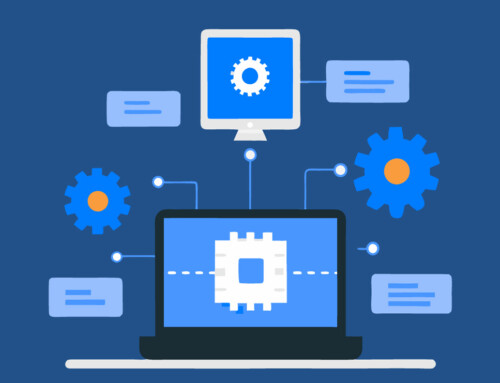Contents
In today’s commercialized and highly competitive sports industry, sports contract law plays a vital role in managing the complex legal relationships between athletes, teams, agents, and sponsors. These contracts are not only binding agreements that define responsibilities and compensation—they also function as essential tools for ensuring legal compliance across multiple jurisdictions, governing bodies, and league-specific regulations. For legal professionals, a solid understanding of sports contract law is essential to effectively navigate this increasingly intricate legal landscape and meet the evolving needs of clients in the sports sector.
At the same time, professionals in the field must address a wide range of legal issues, including contract breaches, doping allegations, labor disputes, intellectual property claims, and athlete safety obligations. As legal and regulatory frameworks evolve, they also shape the risks and responsibilities of contract negotiation, enforcement, and dispute resolution. Successfully managing these dynamic legal landscapes necessitates not only deep expertise but also efficient processes and advanced analytical capabilities.
This guide aims to assist attorneys, law firms, and legal advisors who support stakeholders across the sports sector, providing a comprehensive breakdown of how sports contract law functions, the most common legal issues, and strategies to manage these challenges with precision and foresight.
Key Takeaways:
- Sports contracts legally define performance standards, compensation structures, and expectations for professional conduct.
- Common legal issues in sports include doping compliance, image rights, discrimination claims, and labor law challenges.
- Arbitration or sport-specific governing bodies often resolve disputes rather than traditional litigation.
As the sports industry continues to grow in complexity and value, sports contract law establishes itself as a cornerstone of professional legal practice. Attorneys must not only understand the written terms but also the broader context of league regulations, athlete protections, and shifting legal precedents. From drafting and reviewing contracts to handling arbitration and regulatory violations, lawyers are at the forefront of mitigating the legal risks that shape the modern athletic landscape.
This guide equips legal professionals with the insights needed to interpret, enforce, and optimize contracts, as well as navigate the full scope of legal issues in sports with confidence and clarity.
What Is a Sports Contract and Why It Matters
A sports contract is a legally binding agreement between an athlete and a sports organization, such as a team, league, sponsor, or governing body. It outlines the athlete’s duties, compensation, performance expectations, and rights while also ensuring legal compliance with sport-specific rules and regulations. These contracts form the legal and financial foundation of modern professional athletics.
Although sports contracts are built on traditional contract law principles—including offer, acceptance, consideration, capacity, and legality—they operate within a tightly regulated environment influenced by league policies, collective bargaining agreements (CBAs), and international governing bodies such as FIFA and the World Anti-Doping Agency (WADA).
For example, a contract may provide a fixed salary over two years, including performance-based bonuses, and contain clauses that address injury protection, player transfers, and professional conduct. These agreements must be entered into in good faith, with both parties respecting each other’s rights and contractual obligations. In the case of minor athletes, legal capacity becomes a concern, and a parent or guardian is often required to co-sign on their behalf.
Because each sport has its own regulatory body, the interpretation and enforcement of sports contracts can vary widely. In North America, leagues such as the NFL, NBA, MLB, and NHL operate under collective bargaining agreements (CBAs) that govern salary minimums, caps, free agency conditions, grievance procedures, and player benefits. As a result, individual contracts are not created in a vacuum. They are directly influenced by league-wide agreements, meaning that any change to a collective bargaining agreement (CBA) can have widespread implications for existing player contracts.
Key Clauses That Define a Sports Contract
Sports contracts contain detailed provisions that address both legal obligations and commercial interests. For attorneys working in sports contract law, understanding and drafting these clauses with precision is crucial.
- Signing Bonuses and Performance Incentives
Signing bonuses are lump-sum payments issued at the time of contract execution and are typically prorated over the life of the contract for salary cap purposes. For instance, NFL quarterback Dak Prescott received an $80 million signing bonus as part of his agreement with the Dallas Cowboys. Performance incentives reward athletes for achieving specific benchmarks, such as the number of games played, starts, or innings pitched. Roster bonuses, on the other hand, compensate players simply for remaining on a team’s active roster by a specified date. Some leagues, such as Major League Baseball, restrict or prohibit incentives that are tied directly to statistical achievements.
- Medical Care and Insurance Provisions
Given the physical demands of professional athletics, comprehensive medical and disability coverage is a vital component of any sports contract. Provisions may include Permanent Total Disability (PTD) coverage for career-ending injuries, Temporary Total Disability (TTD) benefits for short-term inability to play, and specialized protections for critical injuries. These policies often cover lost income and forfeited bonuses. Managing these provisions effectively requires a thorough understanding of both insurance law and league-specific rules to ensure the welfare of athletes and contractual compliance.
- Conduct and Morals Clauses
Morality clauses, also known as reputational impact clauses, allow teams, leagues, or sponsors to terminate or penalize a contract if an athlete engages in behavior that could damage the organization’s public image. contracts usually offer more flexibility in defining what constitutes unacceptable conduct. In response to rising concerns about corporate ethics, some contracts now include reverse morals clauses, which give athletes the right to terminate an agreement if the sponsor engages in criminal or unethical activity.
- Media, Image, and Broadcasting Rights
Image rights—also known as personality or publicity rights—allow athletes to control and monetize the commercial use of their name, likeness, voice, and other personal attributes. These rights are central to endorsement deals and branding strategies. A well-drafted contract should clearly define how an athlete’s image may be used, any exclusivity provisions, and expectations for social media behavior. With the growing prominence of Name, Image, and Likeness (NIL) rights, especially at the collegiate level, this area of sports contract law has become increasingly complex and commercially significant.
These contractual components make it clear that athletes are valued not only for their on-field performance but also for their commercial appeal and public image. An athlete’s brand, reputation, and physical well-being are considered critical legal assets that must be strategically negotiated, clearly defined, and legally protected.
Attorneys responsible for drafting or negotiating sports contracts must carefully balance legal obligations with the commercial interests at stake. Ambiguous or poorly drafted provisions can result in costly disputes, especially when dealing with international athletes or agreements that cross multiple legal jurisdictions.
Practicing sports contract law requires more than a basic grasp of contract fundamentals. It involves specialized expertise in navigating the intersection of legal compliance, branding rights, medical risk management, and regulatory oversight. For legal professionals advising athletes, teams, or agencies, developing a deep understanding of these interconnected areas is essential to delivering comprehensive and effective legal counsel.
Types of Sports Contracts to Know
The professional sports industry is built on a variety of legal agreements, each crafted to reflect specific roles and responsibilities. For legal professionals practicing sports contract law, understanding these contract types is essential. Each comes with its legal risks, commercial expectations, and compliance requirements that can impact an athlete’s career and a firm’s legal strategy.
A. Player Contracts
Standard Player Contracts (SPCs) are the foundation of athlete employment. They outline salary, duties, performance expectations, duration, injury protections, bonuses, and termination rights.
Rookie contracts tend to follow league-mandated structures. For example, first-round NBA or NFL draft picks receive predetermined salaries with limited room for contract negotiation. As players gain experience, their bargaining power grows. Veterans often secure higher minimum wages and more flexibility in negotiations.
No-trade clauses, which allow players to block trades to specific teams or altogether, offer athletes greater stability and control. In Major League Baseball, players with ten years of league experience and five consecutive years with one team automatically gain full trade veto rights.
Free agency classifications also shape a player’s options. Unrestricted Free Agents (UFAs) can sign with any team once their contract expires. Restricted Free Agents (RFAs) may receive offers from other teams, but their current team can match them. Exclusive Rights Free Agents (ERFAs), typically newer players, are bound to their original team if offered a league-minimum contract.
B. Coaching and Management Agreements
Contracts for coaches, general managers, and team executives define leadership roles, performance expectations, and organizational responsibilities. These agreements often include base salary, team success bonuses, and clear terms for renewal or termination.
Severance clauses are a critical part of these agreements. While not required by law, they are commonly negotiated based on tenure, position, and performance. Severance packages may include pro-rated bonuses or continued salary for a defined period, often tied to legal requirements like the WARN Act or FLSA regulations.
Non-compete clauses are also standard, though they are increasingly being challenged by regulatory changes such as the FTC’s proposed ban on such provisions. Legal advisors must ensure that these restrictions are narrowly drafted and enforceable within the relevant jurisdiction.
C. Endorsement and Sponsorship Agreements
Endorsement contracts allow athletes to monetize their public persona by promoting products or services. These agreements typically include cash payments, equity, or performance-based incentives.
Exclusivity clauses prevent athletes from endorsing rival brands, and morality clauses allow companies to end contracts if the athlete’s conduct harms their reputation. These clauses are often more detailed and negotiable than those found in team contracts.
In Canada, these agreements are subject to strict advertising laws that govern claims, consumer protections, and labeling standards. Violating these regulations can result in significant legal and financial penalties, underscoring the importance of jurisdiction-specific legal review.
D. Image and Broadcasting Rights Agreements
Image rights, also known as publicity rights, give athletes control over the commercial use of their identity, including their name, likeness, and voice. These rights are often licensed to teams, sponsors, or media companies.
Contracts must clearly define how and where an athlete’s image can be used, the duration of the agreement, and compensation terms. With the growing role of NIL rights, especially in collegiate athletics, image licensing has become a central legal concern.
Conflicts may arise when institutional branding, such as team logos or uniforms, is used in conjunction with personal branding. Universities or leagues may seek revenue shares when their intellectual property (IP) contributes to athlete promotion. In addition, athletes must comply with FTC disclosure rules when promoting sponsors online.
E. Transfer Agreements
Transfer agreements are standard in international sports, particularly soccer. These contracts facilitate the movement of players between clubs, detailing payment terms, performance bonuses, and future compensation clauses.
Although sports organizations like FIFA govern international transfers, labor courts have questioned the legality of certain restrictions on player mobility. Some rulings have compared FIFA rules to restrictive non-compete clauses, highlighting the need for compliance with labor law.
Legal professionals must address not only the contractual terms of the transfer but also related considerations such as immigration law, visa requirements, tax obligations, and local labor protections. These elements are essential to ensuring lawful and enforceable agreements across borders.
From contract clauses that determine player movement to the legal management of image rights and international employment terms, each of these contract types represents a critical area of focus in sports contract law. Attorneys must draft and negotiate agreements that align with legal standards, protect client interests, and adapt to a fast-evolving sports landscape.
Collective Bargaining Agreements (CBAs)
In professional sports, Collective Bargaining Agreements (CBAs) form the legal backbone of the league-wide relationship between athletes and team owners. Negotiated by players’ unions and league representatives, these agreements regulate key aspects of employment, including compensation, working conditions, health benefits, and dispute resolution. For attorneys practicing sports contract law, understanding Collective Bargaining Agreements (CBAs) is critical, as individual player contracts must comply with their terms.
A. What CBAs Regulate
CBAs are far-reaching and set the parameters within which all individual contracts are created. Key provisions often include:
- Minimum salaries and salary caps, which control player earnings and competitive balance
- Guaranteed compensation, outlining when and how players are paid in cases of injury or release
- Health and safety protections, including medical care and concussion protocols
- Arbitration and grievance procedures, which replace traditional litigation for most disputes
- Pension and retirement benefits, which support players after their careers end
These standardized terms help ensure consistency, fairness, and compliance throughout a league.
B. How CBAs Shape Individual Contracts
Every player contract is nested within the framework established by the Collective Bargaining Agreement (CBA). Whether negotiating performance bonuses, trade clauses, or contract lengths, attorneys must ensure that individual terms do not conflict with CBA guidelines.
A change to a Collective Bargaining Agreement (CBA), such as adjusting the salary cap or altering free agency rules, can have far-reaching effects on how teams structure contracts, manage their rosters and comply with league regulations. Legal professionals must, therefore, remain alert to ongoing negotiations and revisions within these agreements.
C. Lessons from Labor Disputes
High-profile labor disputes, such as the MLB strike in 1994, the NBA lockout in 1998, and the NHL’s canceled season in 2004, all stemmed from breakdowns in collective bargaining. These events reshaped league policies on player compensation, contract length, and revenue sharing—and illustrate how CBAs directly impact the economic and legal landscape of professional sports.
Common Legal Issues in Sports
The high-stakes and high-visibility nature of professional sports, combined with complex contractual, regulatory, and commercial frameworks, gives rise to a wide range of legal challenges. For attorneys practicing sports contract law, addressing these legal issues in sports requires cross-disciplinary expertise and a proactive legal strategy.
A. Contract Disputes and Terminations
Contract disputes are among the most common legal issues in the sports industry. Breaches often involve unpaid compensation, non-performance, or disagreements over licensing terms. For example, a licensee may fail to pay agreed-upon royalties, or a club may attempt to terminate a player’s contract prematurely without proper cause.
Wrongful termination is another critical concern, especially when employers fail to follow agreed procedures or act in a discriminatory manner. In such cases, athletes or employees may seek damages for lost income, harm to reputation, or violation of employment law protections. Clear documentation, transparent performance evaluations, and properly structured exit clauses are essential safeguards.
Transfer-related disputes are also rising—particularly when players switch institutions or clubs while under long-term agreements. College athletes signing multi-year NIL contracts, for instance, may trigger repayment clauses when transferring. International clubs may face claims over unpaid transfer fees, training compensation, or solidarity payments. These disputes reflect the legal and financial risks created by athlete mobility and long-term commercial obligations.
B. Doping and Disciplinary Matters
Doping continues to pose a serious threat to the integrity of sports. Regulated by the World Anti-Doping Agency (WADA) and, in the U.S., by the United States Anti-Doping Agency (USADA), anti-doping enforcement operates under a strict liability regime: athletes are responsible for any banned substance found in their system, regardless of their intent.
Anti-Doping Rule Violations (ADRVs) can result from a wide range of conduct, including positive tests, failure to report whereabouts, tampering with samples, or associating with banned individuals. Athletes facing charges are entitled to hearings, independent arbitration, and appeals through the Court of Arbitration for Sport (CAS). Given the career-altering consequences, it is essential to have legal representation during these proceedings.
C. Intellectual Property and Image Rights Conflicts
Legal disputes around IP and image rights have escalated with the rise of NIL monetization. Athletes are increasingly trademarking their names, slogans, and personal branding elements. Meanwhile, teams and institutions continue to enforce their rights over logos, colors, and media assets.
Conflicts frequently arise when college athletes use institutional branding to promote NIL deals, prompting schools to demand compensation or seek IP control. Copyright and trademark law play a central role in resolving these conflicts. Attorneys must carefully draft licensing terms and exclusivity clauses to avoid overlap or infringement.
D. Labor and Antitrust Issues
Labor and antitrust laws underpin many of the most impactful changes in modern sports. CBAs set the foundation for wages, free agency, salary caps, and benefits in professional leagues. However, in college sports, antitrust litigation has driven dramatic change.
Landmark cases, such as O’Bannon v. NCAA and the consolidated NCAA v. House lawsuits, have challenged the amateurism model. The proposed $2.8 billion settlement, scheduled for 2024, would compensate athletes retroactively and establish a forward-looking revenue-sharing system for NIL deals. These cases reveal how antitrust law is being used to redefine athlete rights, forcing institutions to revise their economic models and legal frameworks—while also raising new concerns under Title IX.
E. Discrimination and Harassment Claims
Despite legal protections, discrimination and harassment remain persistent issues in sports. Title IX continues to shape gender equity in school-sponsored athletics, mandating proportional funding, access, and treatment. Yet disparities in resources, media exposure, and opportunities still generate legal challenges.
Racial, religious, and LGBTQ+ discrimination are also legal flashpoints. These may involve hostile work environments, conflicts related to uniforms or scheduling, or underrepresentation in leadership and marketing roles. As the legal landscape evolves, attorneys must help institutions comply with civil rights statutes while developing internal policies to promote equity and inclusion.
F. Agent Misconduct and Representation Conflicts
The growth of NIL has exposed significant regulatory gaps concerning agent conduct, particularly for student-athletes. While professional leagues enforce strict certification standards for agents, NIL representatives are often subject to inconsistent or minimal regulation across jurisdictions.
Misconduct may include signing athletes to exploitative contracts, mismanaging earnings, or locking families into long-term deals without complete transparency. In states without licensing requirements, athletes are left especially vulnerable. Legal professionals must review agent agreements carefully and advocate for enforceable ethical standards that protect young and financially inexperienced clients.
G. Injury, Liability, and Insurance
Injuries are an inherent risk in sports, but legal liability arises when they result from negligence, unsafe facilities, or inadequate supervision. Coaches, trainers, and organizations owe a duty of care to athletes. Failure to meet that duty can lead to lawsuits, particularly in cases of gross negligence or reckless conduct.
While liability waivers are common, their enforceability depends on the jurisdiction, the clarity of the language, and the circumstances at the time of signing. Courts are increasingly willing to override waivers in cases involving intoxication, coercion, or extreme risk. Insurance coverage gaps also present serious risks. Even with policies such as catastrophic injury insurance or Temporary Total Disability (TTD) coverage, athletes may still be left with uncovered medical expenses or lost income.
Attorneys should ensure their clients are fully informed of their insurance options and legal rights in the event of injury. They should also assist in drafting waivers and safety protocols that align with case law and best practices in risk management.
From contract breaches and doping violations to agent ethics and injury liability, these legal issues in sports demand a thorough understanding of law, regulation, and evolving industry norms. Attorneys practicing sports contract law must anticipate these risks, protect their client’s interests, and adapt to a rapidly changing legal landscape.
VI. Dispute Resolution in Sports
Dispute resolution in the sports industry requires fast, confidential mechanisms tailored to the sector’s unique legal challenges. Whether resolving disputes related to contract breaches, doping allegations, or NIL rights, the industry heavily favors alternative dispute resolution (ADR) methods, such as arbitration and mediation, over public litigation. For attorneys practicing sports contract law, understanding the nuances of these processes is essential.
A. Arbitration
Arbitration is the most widely used method for resolving disputes in professional sports due to its speed, confidentiality, and enforceability. Most athlete contracts and league agreements include mandatory arbitration clauses, requiring parties to submit disputes to neutral third parties instead of pursuing court litigation.
Key arbitration forums include:
- Court of Arbitration for Sport (CAS): Based in Lausanne, CAS hears global sports disputes, including anti-doping appeals, transfer conflicts, and Olympic eligibility cases. CAS selects arbitrators for their expertise in both arbitration and sports law. CAS rulings are legally binding, and the industry widely respects them as equivalent to court judgments.
- Sport Dispute Resolution Centre of Canada (SDRCC): The SDRCC provides national Alternative Dispute Resolution (ADR) services for Canadian sports, including its Abuse-Free Sport initiative. It offers arbitration and mediation to address disputes involving athletes, teams, and national sports organizations.
- FIFA Dispute Resolution Chamber (DRC): This forum handles employment disputes between soccer players and clubs, often relating to transfers or training compensation. If one party is a player, coach, or agent, proceedings are free, and parties can appeal to the Court of Arbitration for Sport (CAS).
- NBA Arbitration: The NBA’s system, outlined in its Collective Bargaining Agreement (CBA), features neutral arbitrators whom the league and the players’ union jointly select. The league and the players’ union regard it as a transparent and fair model, frequently using it to resolve grievances over suspensions and contractual interpretations.
Arbitration’s speed and finality make it ideal for high-stakes, time-sensitive matters, such as disciplinary actions or disputes arising during active seasons.
B. Mediation and Internal Grievance Procedures
Mediation offers a flexible, non-binding approach to resolving disputes through facilitated negotiation. Unlike arbitration, mediation allows parties to retain control over the outcome, often preserving relationships that adversarial proceedings could damage.
- FIFA offers free, voluntary mediation services.
- Many leagues and governing bodies (e.g., the NFL and NBA) maintain internal grievance procedures that parties must exhaust before arbitration or litigation can proceed.
- Mediation is often preferred in disputes involving agents, coaches, or internal personnel where continued collaboration is beneficial.
C. Litigation Scenarios
Despite the prevalence of alternative dispute resolution (ADR) methods, litigation remains a vital means of resolving sports-related legal issues, particularly when systemic change or public accountability is necessary.
- NIL Lawsuits: Major antitrust lawsuits, such as House v. NCAA, have utilized litigation to challenge compensation restrictions, resulting in billions of dollars in proposed settlements and the creation of independent arbitration mechanisms to ensure fair NIL valuations.
- Antitrust Class Actions: These suits target league structures or institutional rules that restrict fair competition or player rights. The O’Bannon v. NCAA and NCAA v. Board of Regents cases led to landmark shifts in how the industry treats and compensates college athletes.
- Tort-Based Injury Claims: When an athlete or spectator suffers injury due to negligence or unsafe conditions, litigation may be the only viable path to financial recovery. Claims often involve premises liability, product liability (e.g., defective equipment), or medical malpractice.
Although litigation is typically slower and more public than arbitration or mediation, it plays a vital role in cases involving third-party interests, disputed arbitration clauses, or the need to establish legal precedent. Choosing the proper forum for dispute resolution in sports requires careful consideration of several factors, including jurisdiction, enforceability, confidentiality, and overall strategic goals.
Legal counsel must evaluate whether a matter requires a swift resolution, such as mid-season arbitration, or whether it involves broader legal implications that warrant pursuing litigation in a public court. Navigating this complex environment demands not only deep expertise in sports law but also reliable case management systems and well-informed legal strategy.
<<photo>>
Landmark Legal Cases in Sports Contract Law
Understanding key legal precedents is crucial for comprehending how sports contract law continues to evolve across various jurisdictions. Several landmark cases—both in the United States and Canada—have significantly shaped the interpretation of athlete rights, compensation, and organizational responsibilities.
A. Influential U.S. Cases
This foundational Supreme Court case ruled that the NCAA’s control over college football television rights was in violation of antitrust laws. It paved the way for schools and conferences to negotiate individual broadcasting deals, contributing to the commercial explosion of college sports. It also laid the groundwork for later legal challenges to NCAA policies on athlete compensation.
Former UCLA basketball player Ed O’Bannon challenged the NCAA’s use of athlete names and likenesses in video games without compensation. The court ruled that such practices violated antitrust laws, setting a legal precedent for athletes’ rights to their Name, Image, and Likeness (NIL). This case helped usher in the current NIL era in collegiate athletics.
Martin, a professional golfer with a disability, sued the PGA Tour for the right to use a golf cart during competition. The Supreme Court ruled in his favor under the Americans with Disabilities Act (ADA), reinforcing legal obligations to accommodate athletes with disabilities and expanding the understanding of equity in sports participation.
Though not a court case, Armstrong’s high-profile arbitration hearings with the U.S. Anti-Doping Agency (USADA) exemplify the power of arbitration in anti-doping disputes. The proceedings led to his lifetime ban and stripping of Tour de France titles, demonstrating the binding nature and public consequences of private dispute resolution in sports.
B. Key Canadian Cases
This Supreme Court of Canada decision established that waiver clauses do not automatically shield organizations from liability, particularly in cases of negligence or impaired judgment. It introduced a “positive duty of care” for organizers and clarified that waivers must be clearly communicated and reasonably obtained to be enforceable.
In recent years, several class-action lawsuits have challenged the classification of junior hockey players as amateur athletes rather than employees. These cases argue that players should be entitled to minimum wage and employment benefits under provincial labor laws. Although outcomes vary, these lawsuits continue to reshape how young athletes are treated in the Canadian sports system.
Emerging Legal Trends in Sports
The legal environment in sports is evolving rapidly, shaped by digital innovation, shifting cultural norms, and changing business models. Legal professionals must anticipate and respond to emerging risks and opportunities across multiple areas. Key developments include:
A. Name, Image, and Likeness (NIL) Rights
The rise of NIL rights has reshaped college athletics by allowing student-athletes to monetize their brand. However, it presents complex legal challenges, particularly in the areas of immigration, equity, and contract enforcement.
Key Issues:
- New income opportunities through endorsements, sponsorships, and licensing.
- International student-athletes on F-1 visas face restrictions, as NIL activity may be classified as unauthorized employment.
- Proposed settlements, such as House v. NCAA, introduce direct institutional payments, which could expose schools to discrimination claims if foreign athletes are excluded.
- Contractual challenges include determining the fair market value, protecting institutional intellectual property, and ensuring regulatory compliance.
Legal teams must draft NIL agreements that address these issues proactively and reflect evolving compliance standards.
B. Mental Health Provisions in Contracts
Mental health is becoming a formal consideration in sports law, reflecting a broader understanding of athlete welfare and organizational responsibility.
Key Considerations:
- Duty of care now extends beyond physical health to mental well-being.
- Contract clauses are beginning to mandate access to mental health services and procedures for managing related performance concerns.
- Particular attention is needed for vulnerable groups such as minors and elite athletes under intense pressure.
- Privacy and confidentiality must be balanced with organizational responsibilities for health and safety.
This trend is influencing the structure of athlete agreements, embedding mental health into core legal obligations.
C. Esports and Digital Contracting
The global rise of esports has outpaced legal regulation, creating a fragmented landscape with unique contracting challenges.
Legal Risks and Needs:
- Lack of unified regulation leads to difficulties in cross-border enforcement.
- Contracts with minors raise issues around child labor laws, enforceability, and misclassification as independent contractors.
- Data privacy laws, such as COPPA, apply strict standards for advertising and data collection from underage users.
- IP ownership typically resides with game publishers, so agreements must clearly define licensing rights, revenue shares, and content use.
Legal practitioners working in esports must navigate the intersection of digital rights, labor law, and international IP considerations.
D. Cryptocurrency and Sports Betting
These areas represent both innovation and risk, requiring strict compliance and strategic foresight.
Key Legal Challenges:
- Crypto sponsorships and fan tokens must comply with advertising laws and uncertain financial regulations.
- Athlete compensation in crypto triggers complex tax issues (e.g., payroll vs. capital gains) and exposes them to market volatility.
- Offshore and online betting platforms increase the risk of:
- Match-fixing
- Fraud
- Breaches of AML/KYC obligations
- Regulatory uncertainty over whether crypto assets are considered currencies, securities, or commodities.
Legal advisors must closely monitor developments and ensure robust protections in sponsorship, compensation, and licensing agreements to ensure compliance with relevant laws and regulations.
Final Thoughts
The modern sports industry functions within a complex and highly regulated legal environment. Sports contracts now serve as more than simple financial agreements; they operate as critical tools that structure careers, govern relationships, and define the rules of engagement across leagues and jurisdictions. As sports continue to grow in scale and complexity, legal expertise has become essential rather than optional.
Key developments underscore this transformation:
- Contracts are increasingly comprehensive. Agreements now address performance metrics, compensation structures, image rights, NIL provisions, transfer restrictions, and mental health clauses. Legal advisors must draft and review these contracts with a focus on regulatory compliance and athlete welfare.
- Athletes are seen as multidimensional assets. A player’s public image, branding, and conduct are contractually managed with the same care as their athletic performance. Legal strategies must support both on-field success and off-field marketability.
- Legal issues in sports are expanding. Challenges related to antitrust, intellectual property, doping, and international transfers require a deep understanding of sports-specific regulations. Issues in newer sectors, such as esports and cryptocurrency sponsorships, demand even greater flexibility and legal insight.
- The definition of duty of care is evolving. Organizations now have a legal and ethical responsibility to support athletes’ mental health, ensure safe working conditions, and provide equal treatment across gender, race, and age.
- Innovation often moves faster than regulation. The rapid rise of NIL deals, esports growth, and cryptocurrency integration reveals ongoing gaps in existing legal frameworks. This lag creates potential vulnerabilities for athletes, especially those lacking strong representation or institutional support.
Legal literacy is now a critical asset in sports management, athlete representation, and team operations. Navigating this legal landscape requires more than a general understanding of contract law. It requires specialization in sports law, combined with proactive strategies to manage risk, resolve disputes, and capitalize on opportunities.
RunSensible equips legal professionals with powerful tools to manage contracts, resolve disputes, and advise clients in the fast-paced world of sports. Get started with a free trial and see how smarter practice management works for sports law.
FAQs
1. What makes sports contracts different from regular contracts?
Sports contracts, while grounded in general contract law principles (such as offer, acceptance, and consideration), are layered with sport-specific rules, league governance standards, and Collective Bargaining Agreements (CBAs). These agreements often contain specialized clauses for signing bonuses, performance incentives, medical care coverage, conduct and morals, and image and media rights. This reflects the high-stakes, highly public nature of professional sports, where contractual compliance is closely tied to brand value, performance, and the integrity of the league.
2. How do doping allegations affect contract terms?
Doping allegations can have significant contractual consequences due to the strict liability standard enforced by agencies like WADA and USADA. Most professional sports contracts include morality clauses that allow for termination or penalties when an athlete engages in behavior that harms the organization’s reputation, including doping violations. These clauses have been enforced in high-profile cases such as Lance Armstrong’s, leading to financial penalties, loss of endorsements, and career-impacting sanctions.
3. Can an athlete sue a team for breach of contract?
Yes, athletes can sue if a team fails to fulfill its contractual obligations—such as non-payment of salary or wrongful termination. Legal remedies often include claims for damages, such as lost income or reputational harm. However, many sports contracts require arbitration or mediation before resorting to litigation.
4. Who settles disputes in international sports?
Disputes are primarily resolved by specialized alternative dispute resolution (ADR) bodies. The Court of Arbitration for Sport (CAS) handles global arbitration, while FIFA’s Dispute Resolution Chamber (DRC) oversees employment-related issues in soccer. In Canada, the Sport Dispute Resolution Centre of Canada (SDRCC) serves a similar national function. These institutions provide faster, more sport-specific resolutions than traditional courts.
5. What are NIL rights, and why are they legally important?
NIL (Name, Image, and Likeness) rights refer to an athlete’s legal ability to control and profit from their brand. These rights are critical in today’s sports landscape, especially for student-athletes, who can now earn from endorsements and sponsorships. Landmark cases like O’Bannon v. NCAA and the House v. NCAA settlement have transformed the collegiate model, enabling direct compensation and redefining the amateur-professional boundary.
References:
- Definition of Professional Sports Contract – Law.Cornell.edu
https://www.law.cornell.edu/uscode/text/15/78mm
- NCAA v. Board of Regents of University of Oklahoma – Oyez
https://www.oyez.org/cases/1983/83-270
- O’Bannon v. NCAA – Oyez
https://www.oyez.org/cases/2013/13-392
- What is the USADA Doping Control Process? – USADA.org
https://www.usada.org/athletes/results/doping-control-process/
- Name, Image, and Likeness – Tulane Law School – Sports Law Institute
https://www.law.tulane.edu/sports-law-institute/name-image-and-likeness
Disclaimer: The content provided on this blog is for informational purposes only and does not constitute legal, financial, or professional advice.
